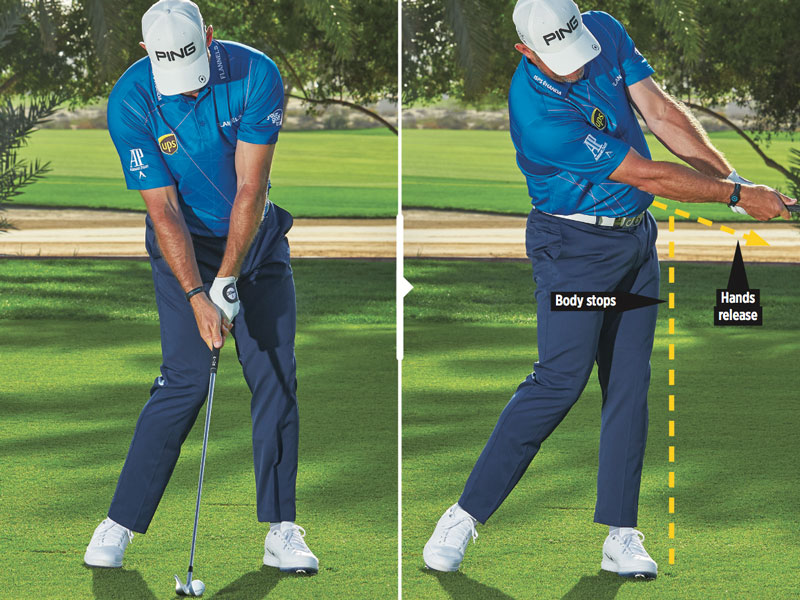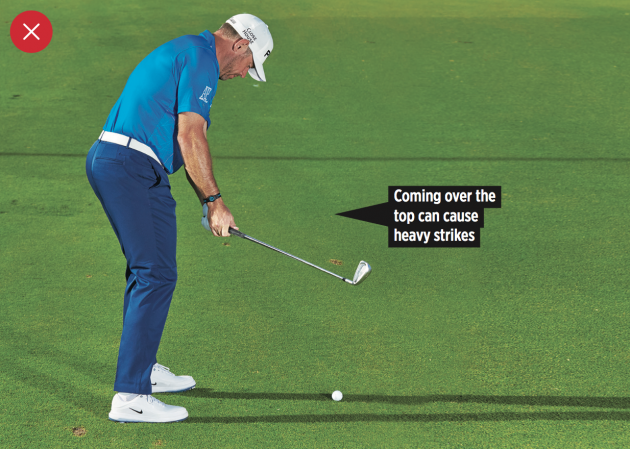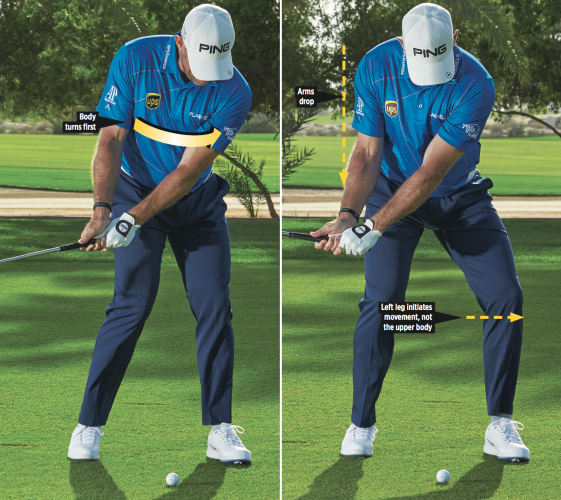Lee Westwood Tips: 5 Common Faults Fixed
The 10-time Ryder Cupper and prolific tour winner offers his best tips and advice for addressing some of golf’s most common problems…

The 10-time Ryder Cupper and prolific tour winner offers his best tips and advice for addressing some of golf’s most common problems…
Lee Westwood Tips: 5 Common Faults Fixed
I’ve been out on tour for over 25 years now, and as you can imagine, over that time I’ve played with an awful lot of club golfers and amateurs in Pro-Ams – some very good and some struggling with the kind of typical faults you see at golf clubs up and down the country every day.
I’ll be picking out four common golfing ailments – plus one that you see a little less often – and highlighting the most likely causes, along with some useful remedies.
I hope that something in this will help you improve and work towards eliminating the faults that are costing you shots most often out on the course.
1 Heavy strikes

Hitting it fat normally happens when you either lose head height through the ball or your swing comes over the top.
Subscribe to the Golf Monthly newsletter to stay up to date with all the latest tour news, equipment news, reviews, head-to-heads and buyer’s guides from our team of experienced experts.
To help remedy this, I would suggest that practising with the ball teed up is a good way to help you retain head height as you swing.
Tee the ball up and practise picking it off the tee.
Try to imagine that your chin is resting on a shelf at address, and that from there, your head is allowed to move backwards and forwards but not up and down.
If you can do that off a tee, you’ll be fine. But if you can’t, then hitting off the turf may pose you a few problems and you’ll need to spend some time on the range.
2 Slicing

Slicing generally comes from getting to the top of the backswing and the body then being the first thing to go at the ball, rather than letting your arms drop into position and then turning on to the ball.
It’s a common fault in those who don’t make a full turn into their right side.
Keeping your right knee flexed as much as possible is a good idea, as it gives you something to resist against as you turn into a solid right side.
Also try and make sure your chest turns over your right leg without swaying on the way back.
On the way back down, I always try to keep my right leg still and initiate the movement with my left leg.
It’s almost like I feel my knees parting at the top as I hold my right leg in position.
3 Lack of distance

This really could just be a matter of using the wrong driver, the wrong shaft and the wrong loft.
Although custom fitting is now much more prevalent than it was, I would think that a lot of amateurs still aren’t using the right equipment for them, so make sure you do a bit of testing with different lofts and shafts.
In terms of technique, a common error I see is that people don’t release their hands.
They get in front of it and try and steer the ball down the fairway, with the body dragging the arms through rather than stopping and allowing the arms to swing past and take over, which is where you get maximum distance from.
Expand 7 Tour Pro Iron Play Tips

European Tour pro Connor Syme gives us his top…
Expand 10 Tour Pro Ball Striking Tips

10 Tour Pro Ball Striking Tips
Need help with your ball striking? Here are…
Expand 4 Putting Drills Guaranteed To Lower Your Scores

4 Putting Drills Guaranteed To Lower Your Scores
Struggling with confidence on the greens?
Expand 21 Things You Didn’t Know About Lee Westwood

21 Things You Didn’t Know About Lee Westwood
How well do you know the European Tour…
4 Hooks

I don’t see many amateurs hit hooks in Pro-Ams as it’s typically a fault associated with lower-handicap golfers.
This fault generally comes from the legs moving too quickly on the downswing and the club dropping on the inside.
Players then need active hands to try and catch up and either hit from behind the ball and block it, or flip their hands and pull-hook it.
Both shots come from the same place – too much on the inside on the way down, with the legs firing too fast and getting through it too quickly.
In the first part of the downswing, feel like you’ve got solid legs and that you’re swinging your arms down – that way your arm swing will sync with your body turn.
Related: 10 Tour Pro Ball Striking Tips
5 Inconsistent pitching

This can be down to many different things, from loss of head height to excessive shaft lean on the first movement down.
Instead of swinging the club past themselves, players lean the shaft and change the angle by driving it forwards.
Trying to help it in the air is then the opposite of that, where people try to scoop the ball in the air rather than letting the club’s loft do the work.
You don’t often see people decelerating into it as that would generally come from too long a backswing – most golfers are more likely to get short and anxious.
Everyone is very different, and inconsistent pitching can really come from a variety of places.
But if too much shaft lean is your fault, try to get the feeling of the club swinging past you through impact, just as in the quest for more distance.
Photography: Paul Severn